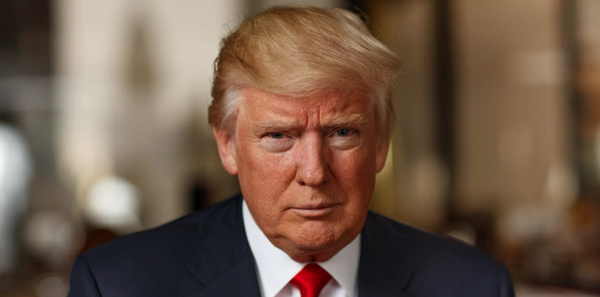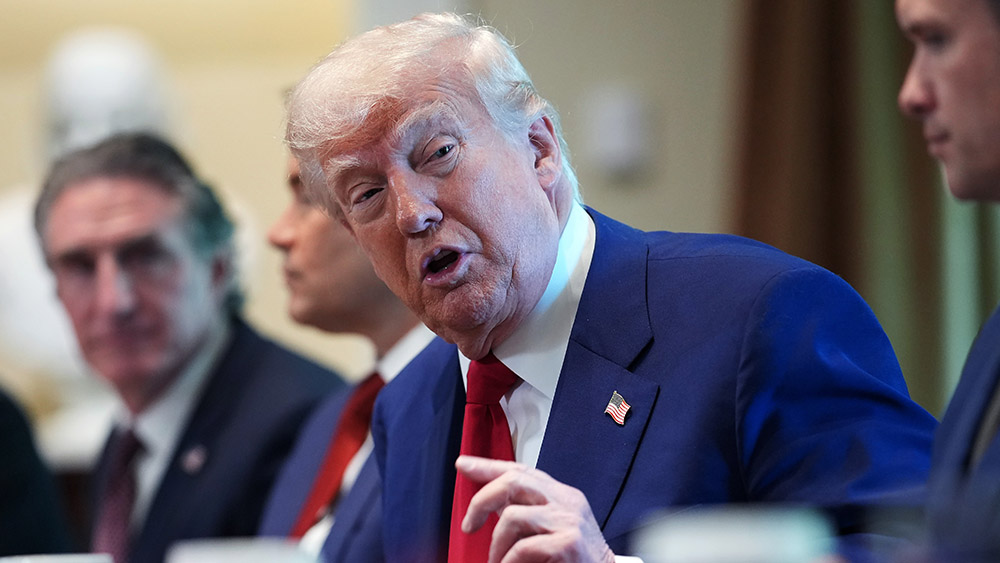Trump administration cuts debt growth by 92% in early fiscal overhaul
05/14/2025 / By Willow Tohi

- Trump’s administration reduced the annual growth of publicly held debt by 92% compared to Biden’s final months, with debt increasing just $37.2 billion from January 20 to May 5 vs. $478.4 billion in 2024.
- DOGE, led by Elon Musk, achieved $150 billion in savings by canceling contracts, eliminating programs (e.g., a $2.9B refugee resettlement initiative) and reducing fraud. Agencies like Health and Education led cuts, while Commerce lagged.
- Corporate tax revenue rose 15% ($21B) and tariffs added $6B, despite IRS workforce cuts. Payroll/self-employment taxes also grew by $100B, countering predictions of economic decline.
- Entitlements (Social Security, Medicare) remain untouched, and border spending rose ($42B). Long-term debt sustainability requires Congressional action, but partisan gridlock risks stalling reforms.
- While debt now grows slower, the $26T debt (115% of GDP) poses risks. Early success contrasts Biden’s spending but hinges on Congress codifying cuts — austerity vs. entitlements will test political resolve.
President Donald J. Trump’s administration has marked an early milestone in its pledge to combat climbing national debt, reducing the annual growth of publicly held debt by 92% compared to the final months of the Biden administration. According to Department of the Treasury data analyzed by the Washington Examiner, debt held by the public — funds borrowed through government bonds and loans from foreign entities, pension funds, and private investors — inched up just $37.2 billion between Inauguration Day on January 20 and May 5. This starkly contrasts with $478.4 billion in debt growth over the same period in 2024 under President Joe Biden, signaling a sharp policy shift in federal fiscal management.
Trump’s team attributes this turnaround to both aggressive spending cuts under the newly formed Department of Government Efficiency (DOGE), led by CEO Elon Musk, and surging revenue driven by corporate tax increases linked to economic expansion and expanded tariffs. While the total national debt of $26.2 trillion remains enormous, the administration’s focus on curbing frivolous spending and capitalizing on economic momentum has sparked optimism among fiscal conservatives.
Debt growth slashes amid Musk-led efficiency drive
The most immediate driver of debt reduction lies in the creation of DOGE, an agency tasked with rooting out inefficiency and waste across federal agencies. As of April, the department reports $150 billion in cost savings, equivalent to $931.68 per taxpayer, through measures like contract cancellations, fraud prevention, and program eliminations.
Critics initially accused the agency of overreach, but recent Treasury data appear to vindicate its methods. Over 7,000 federal contracts have been terminated, including a controversial $2.9 billion refugee resettlement program. The Department of Health and Human Services led cost savings by slashing programs, while the Department of Education and General Services Administration followed closely. Conversely, agencies like Commerce and Justice showed minimal progress, hinting at deeper structural challenges.
DOGE’s website outlines its approach: “Our team focuses on asset sales, contract cancellations and renegotiations, fraud reduction, grant eliminations, workforce adjustments, and regulatory streamlining.” Musk, often leveraging live-streamed town halls with agency heads, has framed the initiative as necessary to “starve the fat” of bureaucracy.
Revenue surge fuels fiscal stability
While spending cuts are central to the administration’s strategy, tax collections have also outperformed projections. Federal revenue increased by $21 billion in corporate taxes, a 15 percent increase, and almost $6 billion from tariffs compared to 2024. Surprisingly, this occurred amid ongoing reductions at the Internal Revenue Service (IRS), which cut nearly a third of its workforce.
“Contrary to doom-and-gloom predictions, the economy boomed,” said one Treasury official, noting that payroll and self-employment tax receipts rose by over $100 billion during the same period. At the same time, targeted spending cuts — such as a 42% reduction in international aid and 13% decrease in Education Department outlays — balanced the equation.
Tariffs, meanwhile, have raised revenue while drawing accusations of distorting trade. The administration defends them as a temporary corrective measure, arguing that private-sector growth has offset consumer costs.
Policy crossroads: The long road to sustainability
Despite the progress, economists caution that the fight is far from over. The administration’s 92% reduction in debt growth parallels “slowing a car still racing toward a cliff,” as one analyst noted. Entitlement programs like Social Security and Medicare, which account for over two-thirds of spending, remain untouched. Policymakers must also reconcile urgent reductions with operational realities: the Department of Homeland Security, for instance, saw a $42 billion increase in border and customs spending to enforce immigration crackdowns.
Congressional action is critical moving forward. While Trump can impound funds via executive authority, permanent cuts require legislative approval. Republican leaders have promised a sweeping “one big, beautiful bill” to codify long-term reforms, but partisan gridlock and presidential transitions have often derailed similar efforts.
A fragile triumph ahead of crucial fiscal battles
The Trump administration’s debt reduction, while lauded by fiscal conservatives, remains fragile. The $26 trillion debt is still 115% of GDP, a threshold linked to economic instability by economists. Yet the administration’s early steps — combining Musk’s iconoclastic efficiency with tax-driven growth — offer a stark contrast to the Biden era’s trillion-dollar spending sprees.
“Trump is quietly proving fiscal responsibility can coexist with a booming economy,” said pollster Frank Luntz, noting a recent surge in approval among swing voters. However, the real test lies ahead: whether Congress can translate executive actions into enduring reforms, or if this 92% milestone becomes a fleeting footnote in American fiscal history.
As austerity measures clash with entitlement obligations, the next year may prove the truest measure of the administration’s resolve — and the nation’s tolerance for tough choices.
Sources for this article include:
Submit a correction >>
Tagged Under:
big government, Bubble, debt bomb, debt collapse, DOGE, economic riot, Elon Musk, finance riot, fiscal stability, government debt, money supply, national debt, pensions, politics, progress, risk, Trump, White House
This article may contain statements that reflect the opinion of the author
Get independent news alerts on natural cures, food lab tests, cannabis medicine, science, robotics, drones, privacy and more from NewsTarget.com
Get independent news alerts on natural cures, food lab tests, cannabis medicine, science, robotics, drones, privacy and more from NewsTarget.com
RECENT NEWS & ARTICLES
COPYRIGHT © 2017 DEBT COLLAPSE NEWS





















